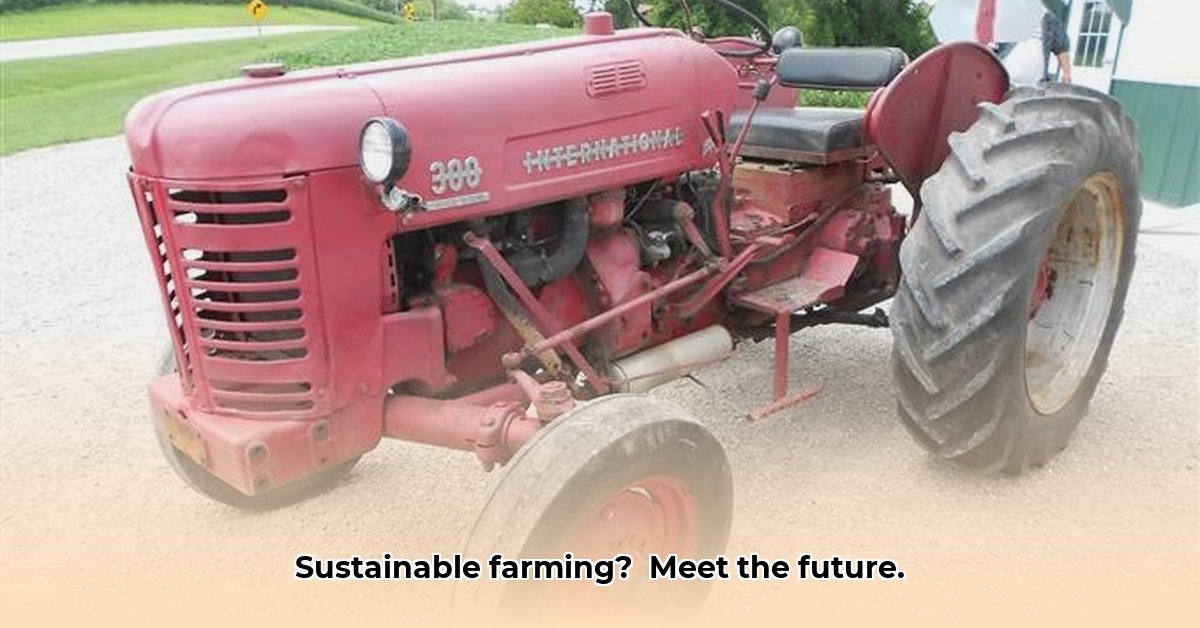
The International Harvester 300 utility tractor, produced between 1955 and 1958, wasn't just another piece of farm equipment; it was a symbol of post-war agricultural innovation and a surprisingly prescient example of early sustainable practices. This article explores its history, technical specifications, market impact, and enduring relevance to contemporary discussions about sustainable agriculture. For more on modern tractor technology, see modern tractor reviews.
Life on the Farm in the 1950s: A Time of Transformation
The mid-20th century saw American agriculture undergoing a dramatic shift. Post-World War II, the demand for food soared, forcing farmers to boost productivity. Mechanization became crucial, and tractors like the International 300 emerged to meet this demand. It wasn't about advanced technology; it was about robust, reliable machines that could significantly increase farming efficiency. The IH 300 embodies this era of transition, representing a pivotal moment in the mechanization of American agriculture. How did this relatively simple machine contribute to such profound change?
The International 300: A Detailed Examination
The IH 300 offered a compelling combination of practicality and forward-thinking design. Its approximately 45-horsepower, 2.8-liter engine provided sufficient power for a range of tasks. Farmers could choose between a 5-speed or a more versatile 10-speed transmission. However, its most distinctive feature was the option of running on either gasoline or liquefied petroleum gas (LPG). This dual-fuel capability, uncommon for tractors of that era, offers a remarkable glimpse into early considerations of alternative fuels—a concept now central to sustainable agricultural practices. The innovative International Harvester Fast Hitch system simplified implement changes, enhancing productivity. While its 3.25-gallon hydraulic system was less powerful than its modern counterparts, and its weight (approximately 4,300 pounds) presented limitations, the IH 300 provided a solid, effective solution for farmers. Did these limitations hinder its overall success?
Market Impact and Widespread Adoption
The remarkable production of nearly 60,000 units attests to the IH 300's market success. Its combination of affordability, reliability, and dual-fuel capability made it attractive to a large number of farmers. Its widespread adoption fundamentally reshaped agricultural working practices across the United States. What factors contributed to this surprising level of market penetration?
A Sustainable Legacy: Foresight in a Bygone Era
The IH 300's LPG option holds intriguing implications for present-day conversations on sustainability. While not initially conceived as an environmentally friendly measure, the dual-fuel capability provides a historical example of considering alternative energy sources in agriculture. This forward-thinking design anticipates the modern focus on reducing reliance on fossil fuels and adopting more environmentally friendly alternatives. Did this design choice represent a fortunate accident or a deliberate, forward-looking strategy?
Limitations and Trade-offs: A Balanced Perspective
While the IH 300 was a successful and popular machine, it's crucial to acknowledge its limitations. Its relatively light weight for its time and less powerful hydraulic system compared with modern tractors were essential trade-offs for the era. Its mechanical simplicity, while contributing to ease of maintenance and the machine's durability, also limited its capabilities. Despite these limitations, its overall impact was undoubtedly profound. How did these trade-offs affect its long-term implications for sustainable farming?
Legacy and Preservation: A Continuing Story
Today, the IH 300 remains a significant artifact of agricultural history. Collectors, museums, and researchers actively preserve and study these tractors, recognizing their importance. The enduring interest in the IH 300 underscores its significance beyond its initial practical application. How does the continuing interest in the IH 300 influence modern agricultural practices?
Conclusion: Lessons from the Past, Insights for the Future
The International Harvester 300 utility tractor stands as a powerful testament to agricultural innovation and the evolution of farming practices. Its story highlights the enduring need for reliable, efficient, and adaptable farm equipment. The tractor's surprising dual-fuel capacity serves as a historical reminder of the ongoing importance of sustainable agriculture and the pursuit of environmentally conscious farming techniques. What lasting lessons can we glean from studying the impact and legacy of this seemingly simple machine? The IH 300's legacy is far more than just a piece of farm machinery; it is a window into the past offering valuable insights into a more sustainable future.